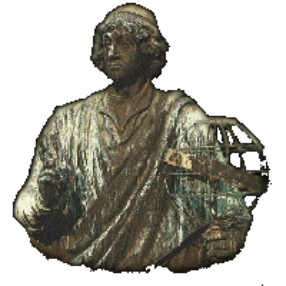Five hundred years ago, some European astronomers began to doubt the old geocentric system. The first and most
famous was Nicholas Copernicus whose image we see at the top left of this page. In 1543, Copernicus published a
book called De Revolutionibus. In it, he described how the Earth was just one of many planets which circle the Sun
in an heliocentric system. The greatest portion of the book consisted of pages and pages of rather tedious
calculations for predicting the positions of planets. But the new theory presented a simple, elegant explanation for
the cause of retrograde motion. In the Copernican system, retrograde motion can be explained by the fact that a
moving Earth causes the planets only to appear to change direction.
In an heliocentric system, the planets display an ever changing array of alignments; at times being easily
visible, and at other times being hidden by the Sun.
Fewer than three hundred copies of the book were published in the first edition. But everyone who was anyone in the sixteenth
century owned a copy. These orginal texts are rather rare today. You may be interested in buying one of the original copies of
Copernicus’ book.
The new ideas set forth in De Revolutionibus were not immediately embraced by astronomers of the time. But after several decades,
more and more natural philosophers would shift their view of our place in the universe. Most notable among them was Galileo
.





















